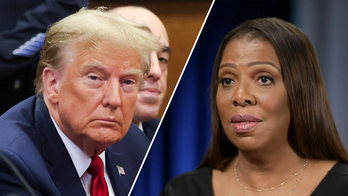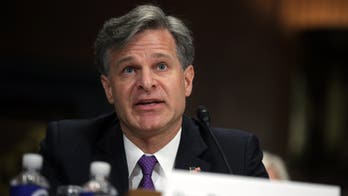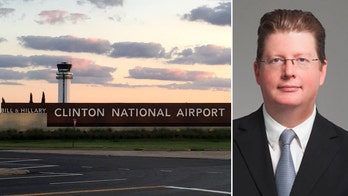Supreme Court to Hear Case on Health Care Law
Which way will each judge go in deciding if law is unconstitutional?
WASHINGTON – Republican Sen. Charles Grassley and House Democratic Leader Nancy Pelosi are joining C-SPAN's call to have cameras in the Supreme Court hearing room for the five-and-a-half hour arguments relating to the federal health care law.
Grassley, of Iowa, the ranking Republican on the Senate Judiciary Committee, wrote to Chief Justice John Roberts on Tuesday requesting that audio and video coverage be allowed in the landmark case.
"Cameras in federal courtrooms are at the very heart of an open and transparent government," he wrote. "Broadcasting the health care reform law proceedings would not only contribute to the public's understanding of America's judicial system, but provide an excellent educational opportunity on a case that has the potential to have a far-reaching impact on every American."
On Wednesday, Pelosi, of California, joined Grassley.
"When the Affordable Care Act is placed before the highest court in our country, all Americans will have a stake in the debate; therefore, all Americans should have access to it. Openness and transparency are essential to the success of our democracy, and in this historic debate, we must ensure the ability of our citizens to take part," she said in a statement.
The requests follow one by C-SPAN, the private, non-profit channel created by the cable television industry in 1979 to broadcast congressional proceedings. Chairman and CEO Brian Lamb wrote Roberts on Tuesday, saying that the length of the case arguments indicates its significance. He said C-SPAN would make the broadcast available to all other media who want to air it.
"It is a case which will affect every American's life, our economy, and will certainly be an issue in the upcoming presidential campaign," Lamb wrote. "Interested citizens would be understandably challenged to adequately follow audio-only coverage of an event of this length with all the justices and various counsels participating ... For these reasons we ask you and your colleagues to set aside any misgivings you have about television in the courtroom in general and permit cameras to televise this particular argument."
The Supreme Court agreed earlier this week to hear a challenge to the law, brought by 26 states out of Florida, which argues that the individual mandate in the Patient Accountability and Affordable Care Act is unconstitutional because it requires all Americans to purchase a product or service -- namely, health insurance.
The nine-member court will also look at severability, meaning if the mandate falls, could the rest of the law survive since it is primarily built on the revenues collected by forcing people to buy health care. It will also address whether Congress has the authority to impose mandatory Medicaid coverage thresholds on states.
The case could be heard in February or March, meaning a decision would be announced most likely in late June, as the 2012 presidential election grabs the nation's attention.
"This law is massive in size and scope. Its effect is reverberating throughout America's economy. The constitutional questions are landmark. The public has a right to hear and see the legal arguments," wrote Grassley.
Having a live cameras in courtrooms is already the practice to some degree in every state and among several federal appellate courts. Grassley has long been a proponent of placing cameras in federal courts and has introduced legislation several times since 1999 to make it so. The latest version has been approved by the Senate Judiciary Committee.
However, the high court still forbids cameras, though it does release audio tapes of its proceedings after arguments are heard. That began under William Rehnquist during the 2000 election recount between George W. Bush and Al Gore. Grassley's office notes the court has released recordings of more than 20 cases since Roberts became chief justice.





